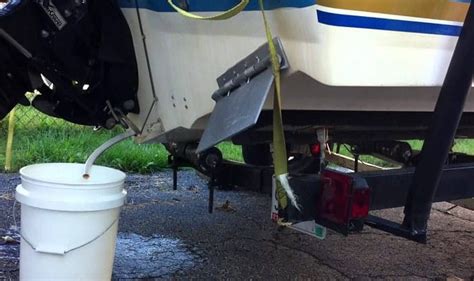Emptying a Boat Gas Tank: A Comprehensive Tutorial
Emptying a boat's gas tank might seem straightforward, but improper procedures can lead to environmental damage, injury, or even a costly repair. This comprehensive tutorial will guide you through the safe and effective emptying of your boat's fuel tank, covering various scenarios and crucial safety precautions. This guide is for informational purposes only and should not be considered professional advice. Always consult your boat's owner's manual and relevant regulations before undertaking any fuel-related task.
Why Empty a Boat Gas Tank?
There are several reasons why you might need to empty your boat's gas tank:
- Winterizing: Preventing fuel degradation and potential engine damage during storage.
- Repairs: To allow for safe work on the fuel system.
- Transport: For easier transport of the boat, particularly if it will be moved by road.
- Fuel Contamination: If fuel becomes contaminated, it needs to be removed and replaced.
- Selling the Boat: A clean fuel system enhances the boat's value.
Methods for Emptying a Boat Gas Tank
The best method depends on the type of fuel tank and your access to tools. Here are the most common techniques:
1. Using a Fuel Siphon
This is a common and relatively inexpensive method, particularly for smaller tanks.
- Safety First: Always work in a well-ventilated area, away from any ignition sources (cigarettes, sparks, open flames). Wear safety glasses and gloves.
- The Process: Insert one end of the siphon hose into the tank and the other end into a suitable container (clearly labeled for gasoline). Create suction (either by mouth – using caution – or a pump) to start the flow. Gravity will do the rest.
- Considerations: This method can be slow, particularly for larger tanks. It’s crucial to ensure a tight seal to avoid spills.
2. Using a Fuel Transfer Pump
Electric or manual fuel transfer pumps offer faster and cleaner emptying than siphoning.
- Safety First: Same safety precautions as with siphoning apply. Ensure the pump is compatible with gasoline.
- The Process: Connect the pump to the tank and the receiving container. Turn the pump on (if electric) and let it do the work.
- Considerations: These pumps are generally more expensive than siphons, but they offer significant time savings and reduced risk of spills.
3. Draining Through the Fuel Tank Petcock (or Valve)
Some boats have a petcock or valve at the bottom of the fuel tank.
- Safety First: Follow the same safety guidelines as above. Use a wrench or other appropriate tool to open the valve.
- The Process: Carefully open the valve and allow the fuel to drain into a suitable container.
- Considerations: This method is only possible if your boat is equipped with a drain valve. It's crucial to ensure the drain line is clear and that the container is positioned appropriately to avoid spills.
4. Professional Assistance
For larger boats, older fuel systems, or if you’re unsure about any aspect of the process, it’s always best to seek professional assistance. A qualified marine mechanic can safely and efficiently empty your tank.
What to Do With the Used Fuel?
Never pour gasoline into the ground or down a drain. This is illegal and seriously damages the environment. Dispose of used gasoline responsibly:
- Recycling Centers: Many recycling centers accept used gasoline for proper disposal. Contact your local waste management authority for details.
- Marine Service Centers: Marine repair shops often accept used fuel.
- Gas Stations: Some gas stations may accept used fuel, but this isn't common.
Frequently Asked Questions (FAQs)
How do I prevent fuel from going bad in my boat's tank?
Adding a fuel stabilizer to your tank before storing your boat for an extended period is highly recommended. This helps to prevent fuel degradation and the formation of varnish or gums.
What happens if I leave gas in my boat tank over the winter?
Leaving gasoline in your boat's tank over winter can cause it to degrade, leading to engine problems such as clogged fuel lines and injectors, and ultimately costing you money in repairs.
Can I use a regular siphon pump for boat gas?
While you can use a regular siphon pump, ensure it's specifically designed for gasoline and is compatible with the type of fuel you're working with. Always double check the material to ensure it's gasoline-safe.
Is it necessary to completely empty my boat's gas tank before winterizing?
Yes, ideally you should completely empty your boat’s fuel tank before winterizing to prevent fuel from deteriorating and potentially causing problems.
How often should I check my boat's fuel tank for leaks?
Regular inspection for leaks is crucial. Check regularly, particularly before and after prolonged storage, for any signs of fuel seepage.
By following these steps and prioritizing safety, you can confidently and safely empty your boat's gas tank. Remember, responsible fuel handling protects the environment and your investment.

